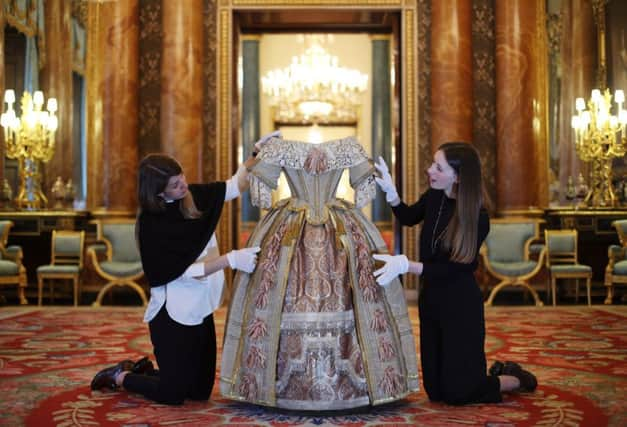How Victoria built a palace inside London’s most expensive fixer-upper


A century before Jacqueline Kennedy accompanied her husband to Buckingham Palace, the late Queen had transformed it from an empty “fixer-upper” into one of the world’s most stately Royal residences, its balcony and grand ballroom dressed for the most magnificent costume balls of their day.
And although the grandeur may have faded by the time the Kennedys saw it, it is being dramatically recreated for a summer exhibition there.
Advertisement
Hide AdAdvertisement
Hide AdThe display, which is being mounted to celebrate the 200th anniversary of Victoria’s birth, harnesses a 19th century illusion known as Pepper’s Ghost to project images around the room that will show it as the Queen and Prince Albert would have known it.
It will also recreate the waltz danced by the Royals and their guests at a ball to mark the end of the Crimean War in 1856.
Victoria was just 18 when in 1837 she moved into Buckingham Palace, three weeks after acceding to the throne – and, like many a young homemaker, set about making it her own.
But for seven years after the death of her uncle, George IV, it had been London’s most expensive empty building, its fabric unfinished and many rooms undecorated and bare.
Advertisement
Hide AdAdvertisement
Hide AdGeorge’s successor, William IV, never moved there, preferring Clarence House during his seven-year reign, and Victoria ignored her ministers’ advice to stay at her childhood home of Kensington Palace, until Buckingham Palace could be brought up to “a suitable standard”.
In 1845, eight years into her reign and having given birth to four of her nine children, she wrote to the Prime Minister, Sir Robert Peel, concerning “the urgent necessity of doing something to Buckingham Palace” and “the total want of accommodation for our growing little family”.
She was given funds to extend it, adding the East Wing to the front, enclosing the previous open, horseshoe-shaped courtyard and introducing the central balcony on which the present Queen would later greet Mrs Kennedy.
The grand ballroom was added because the other state rooms were too small for the season of balls and concerts Victoria had planned.
Advertisement
Hide AdAdvertisement
Hide AdThe writer and critic John Ruskin had commented upon their unsuitability, describing an occasion at Court as “the most awkward crush, with the ruins of ladies’ dresses, torn lace and fallen flowers”.
Following the ballroom’s inauguration, Victoria wrote in her journal: “Albert, even, who generally dislikes State Balls, enjoyed it, and I could have stayed up till 4, I am sure.”
A watercolour by Louis Haghe is the only surviving record of the room’s original Italian Renaissance-inspired decoration, and will form part of the summer show.
The Royal Collection said the exhibition, from July 20, would “tell the story of how the young monarch turned an unloved royal residence into the centre of the social, cultural and official life of the country.”